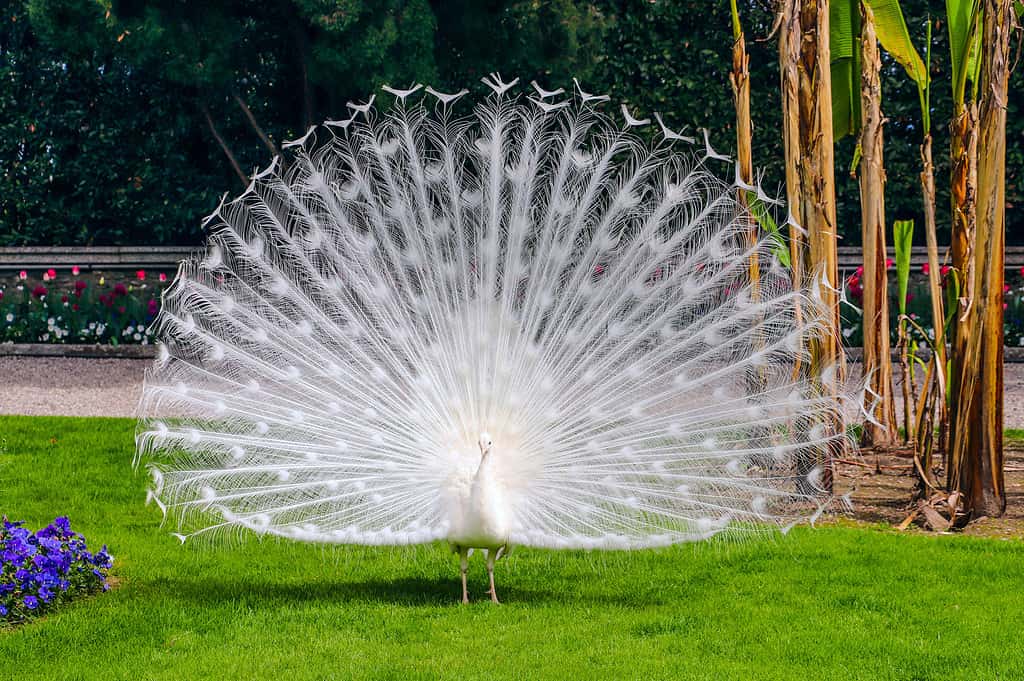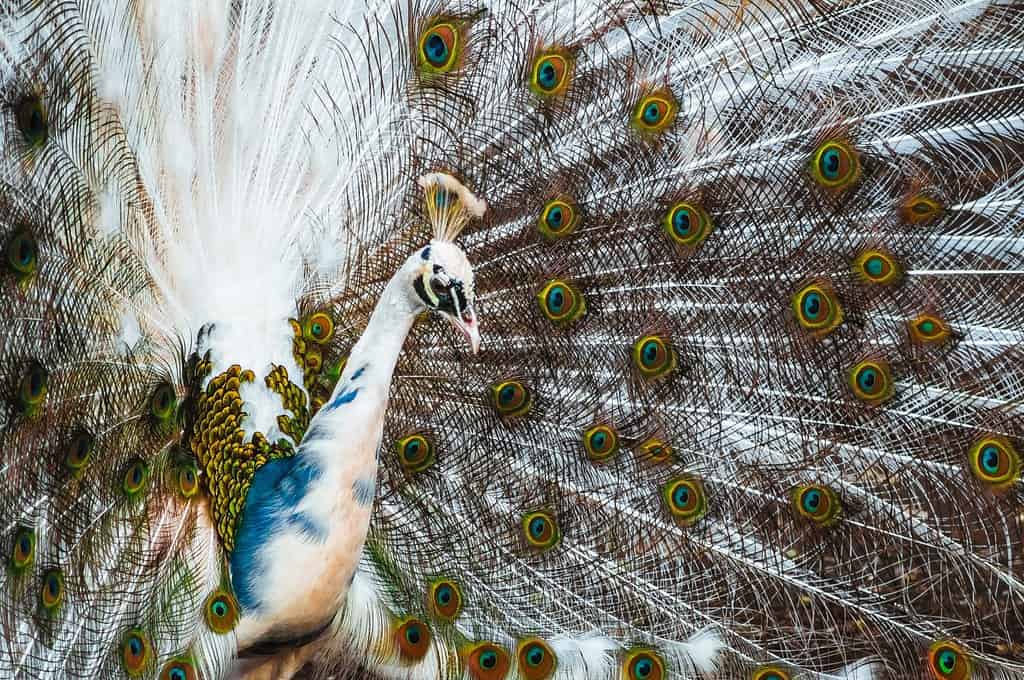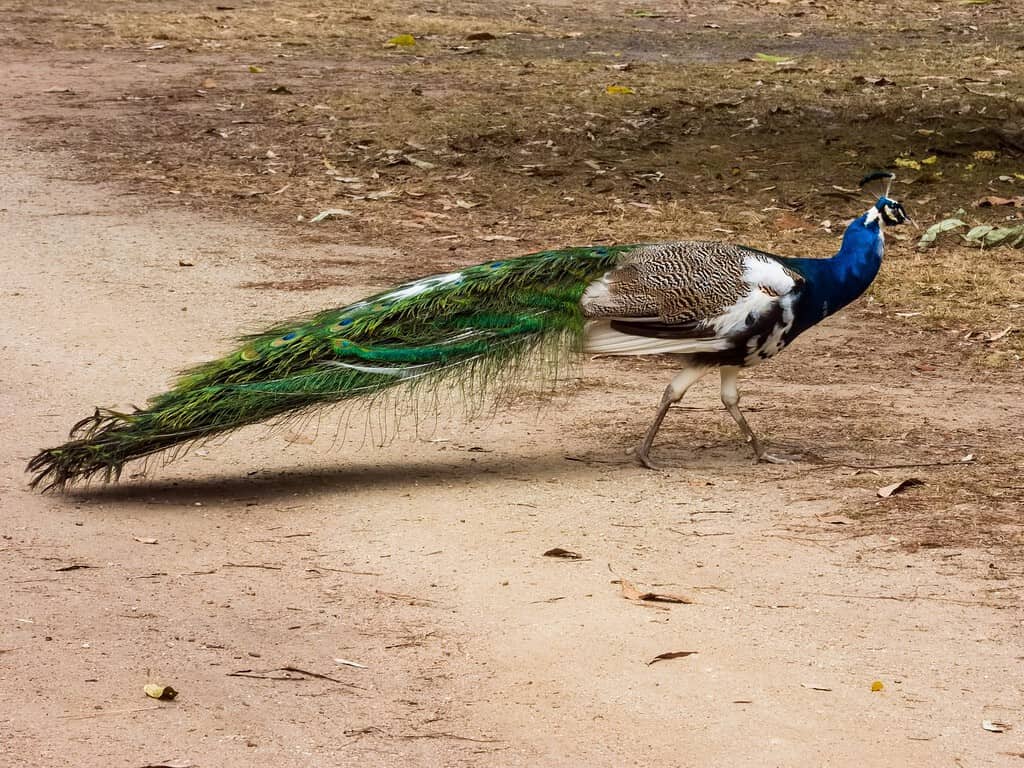Peafowl (Pavo and Afropavo spp.), aka peacocks (technically the term for just the males; females are peahen), are famous for the male’s spectacular multicolored, iridescent plumage. However, naturally occurring mutations in wild types have long been exploited by domestic breeders to create a variety of peacock color and pattern morphs. Among these types are ones known as piebald or “pied” peacocks. While pied mutations are relatively rare in the wild, they are among the most commonly encountered forms in domestic breeding. So, what exactly is a piebald peacock? Read on to find out!

Wild-type peacocks are well-known for their metallic blue and green plumage.
©Evgeny Sergeev/iStock via Getty Images
White Peacocks

Even when a peacock misses its normal coloration, its tail feathers are still dazzling!
©Easy going/Shutterstock.com
To understand what a pied peacock is, we must first consider the white peacock. All-white plumage in peacocks is caused by one of two mutations:
Leucistic
Most white peacocks have a mutation known as leucism, which prevents pigments from being deposited onto plumage. Leucism runs a spectrum from impacting just a single feather to all of them; when the latter occurs, the result is a peacock with entirely white plumage. However, this mutation does not impact eyes and bare parts (beaks, legs, feet), so those areas still retain their color.
Albino
A second much rarer mutation that can result in an all-white peacock is albinism. True albinos have a total lack of melanin production, meaning that not only will their plumage be white, but their eyes and bare parts will also lack color. A true albino peacock can thus be distinguished by paler bare parts and eyes that appear either red or icy gray-blue depending on how the light hits them.
Pied Peacocks

Piebald peacocks display a mix of colored and uncolored plumage.
©Iryna Linnyk/Shutterstock.com
Pied is short for piebald, a term used to describe leucism which only manifests in certain areas of the plumage. This results in a bird with a mix of both colored and uncolored (white) plumage. Depending on where and how much white there is in the plumage, breeders may also name different forms of piebald peacocks as follows:
Dark Pied
The bird is mostly normal colored, with only a small amount of white plumage.
Silver Pied
The bird is mostly white, with only a small amount of normal-colored plumage.
White-Eyed
The bird has white on the eyespots of its tail train feathers.
White-Flight
The bird has white only on the flight and/or covert feathers.
Conclusion

Every piebald peacock is unique in its distribution of colored and uncolored plumage.
©Imogen Warren/Shutterstock.com
A “piebald peacock” refers to any peacock with a leucistic mutation that results in patches of white plumage. If the peacock has all-white plumage but still has color in its eyes and bare parts, it is fully leucistic; true albinos that lack melanin throughout their entire bodies are much rarer. While a relatively rare mutation in the wild, piebald patterns are commonly bred in domestic peafowl.
The photo featured at the top of this post is © Kathleen Juanda Teo/iStock via Getty Images
Thank you for reading! Have some feedback for us? Contact the AZ Animals editorial team.







